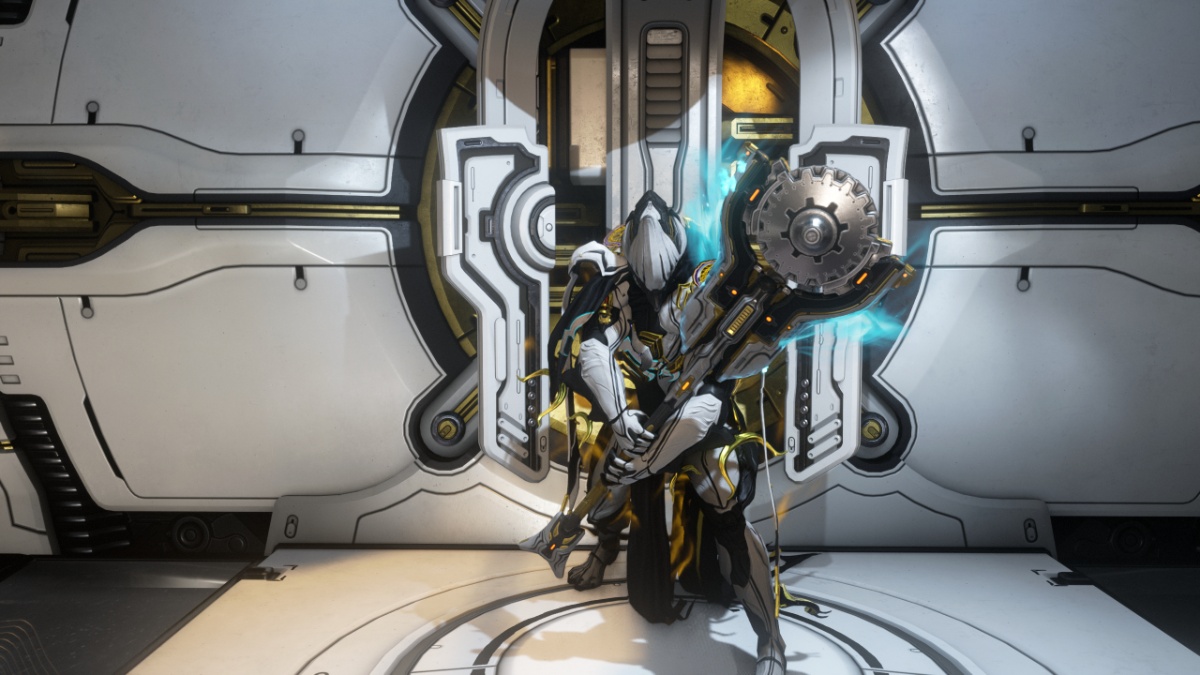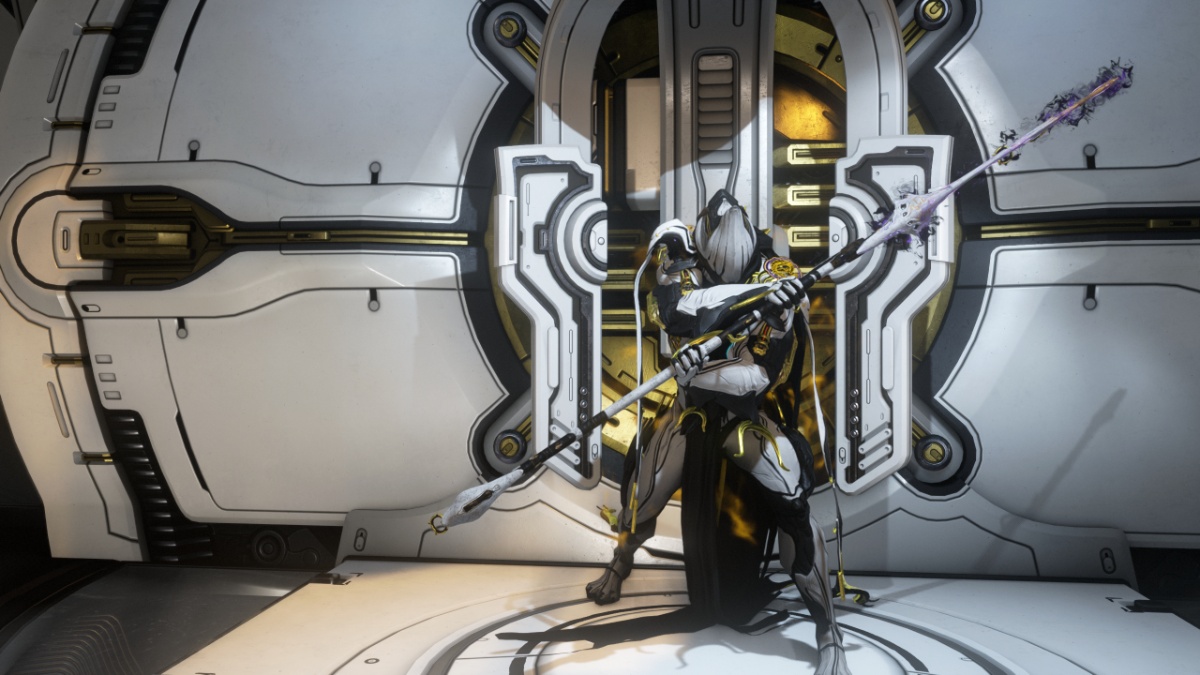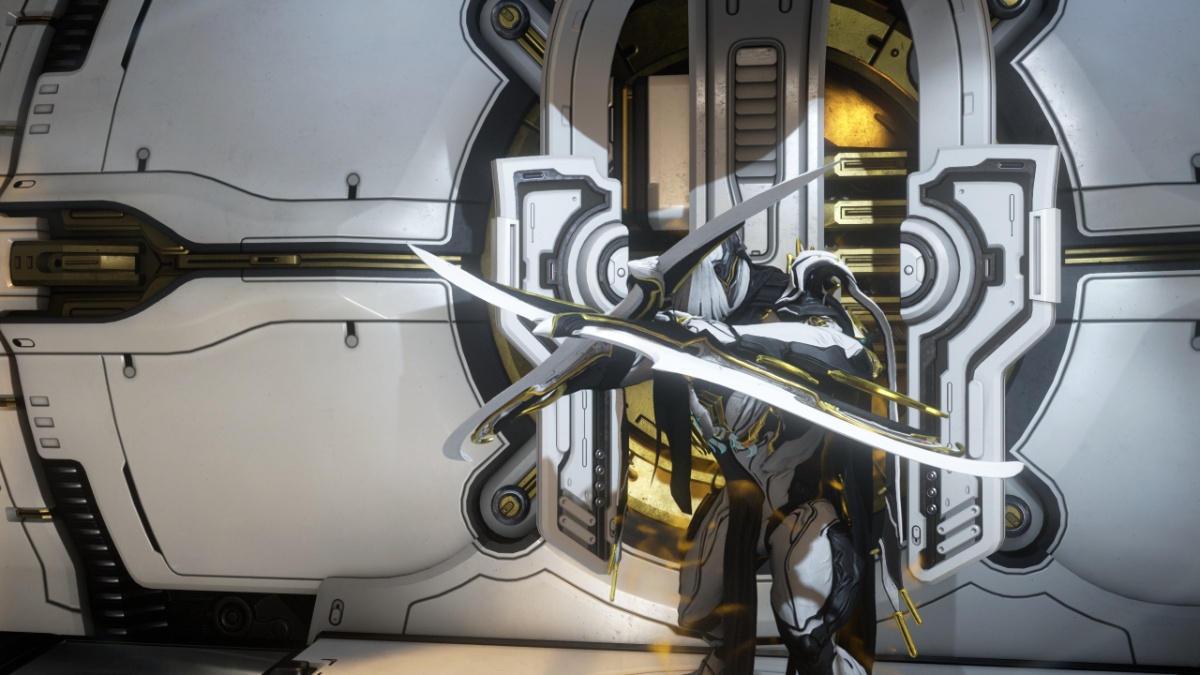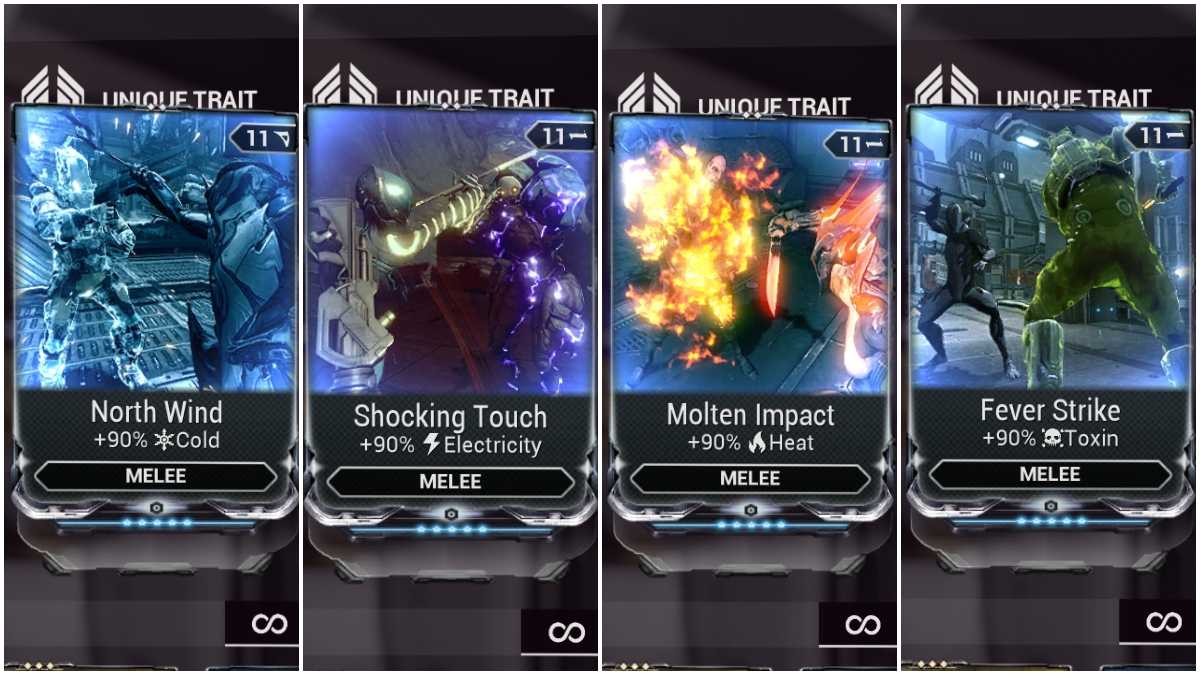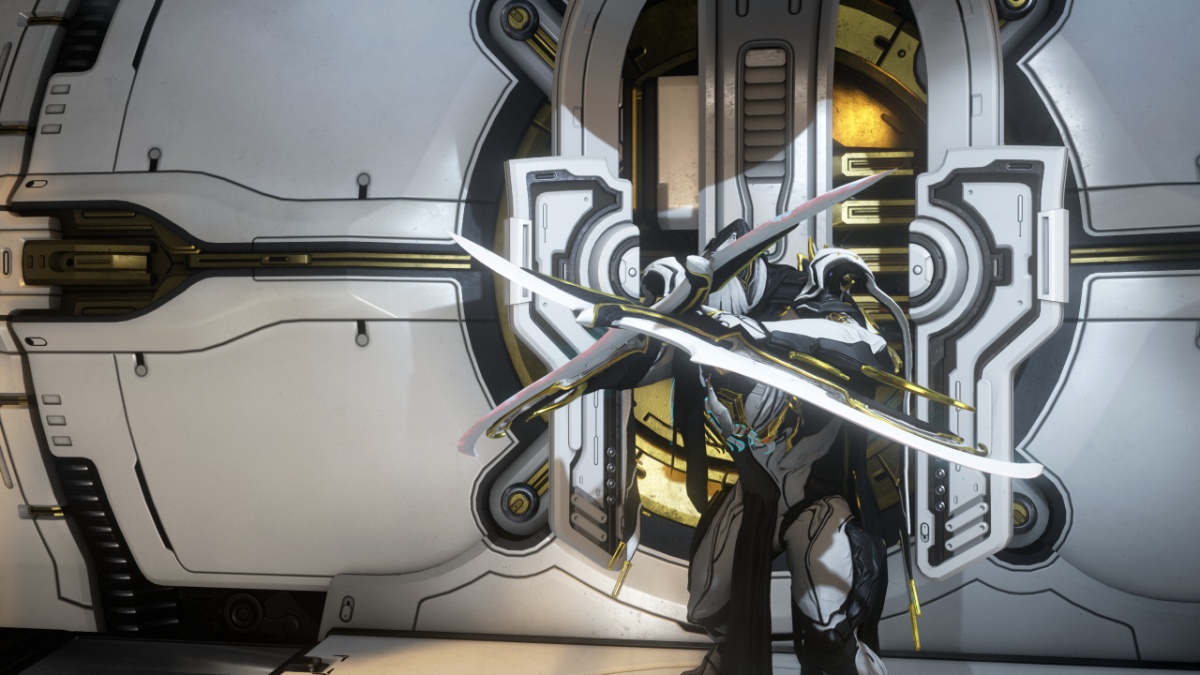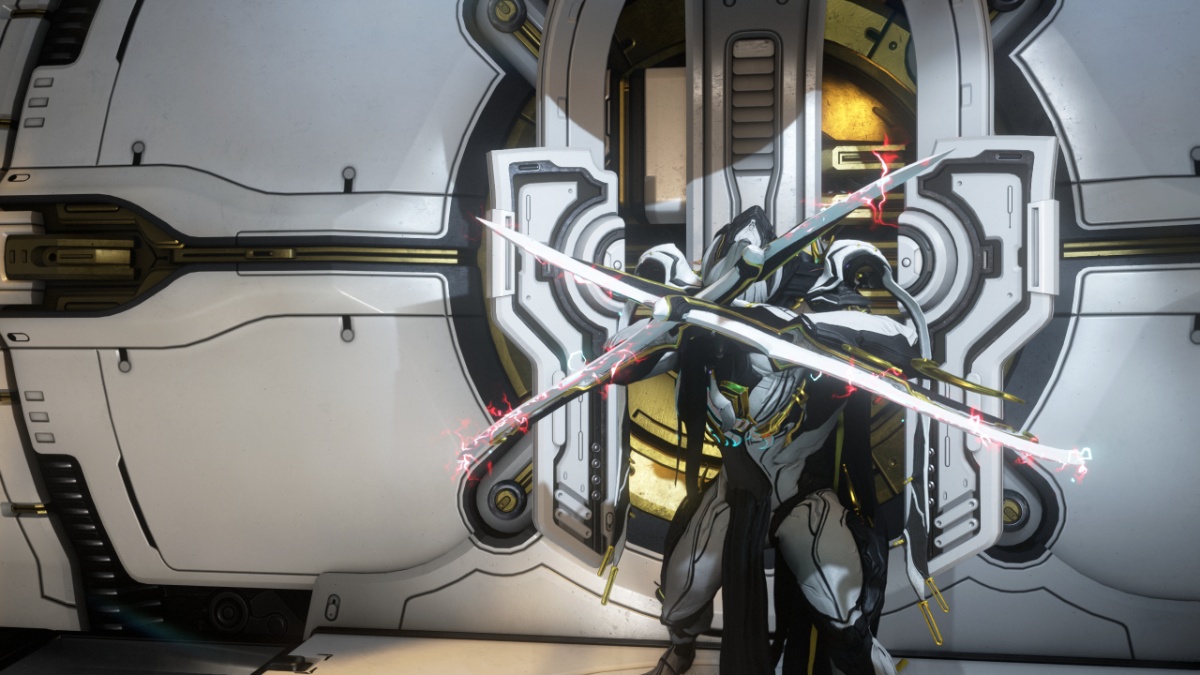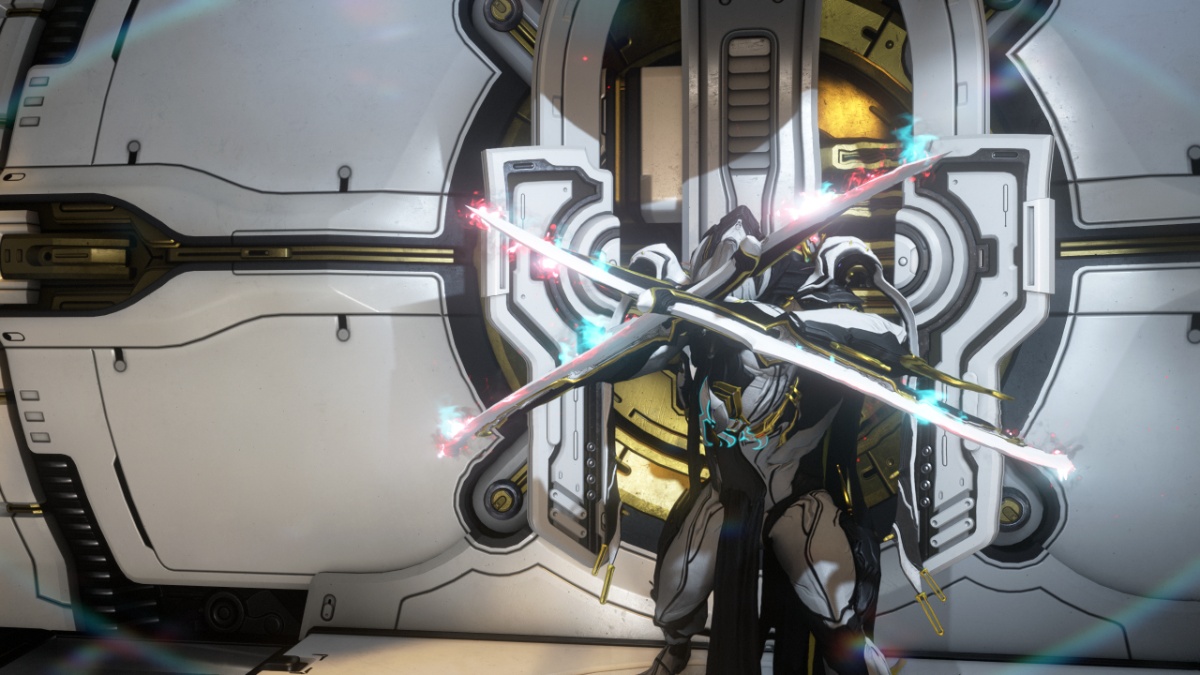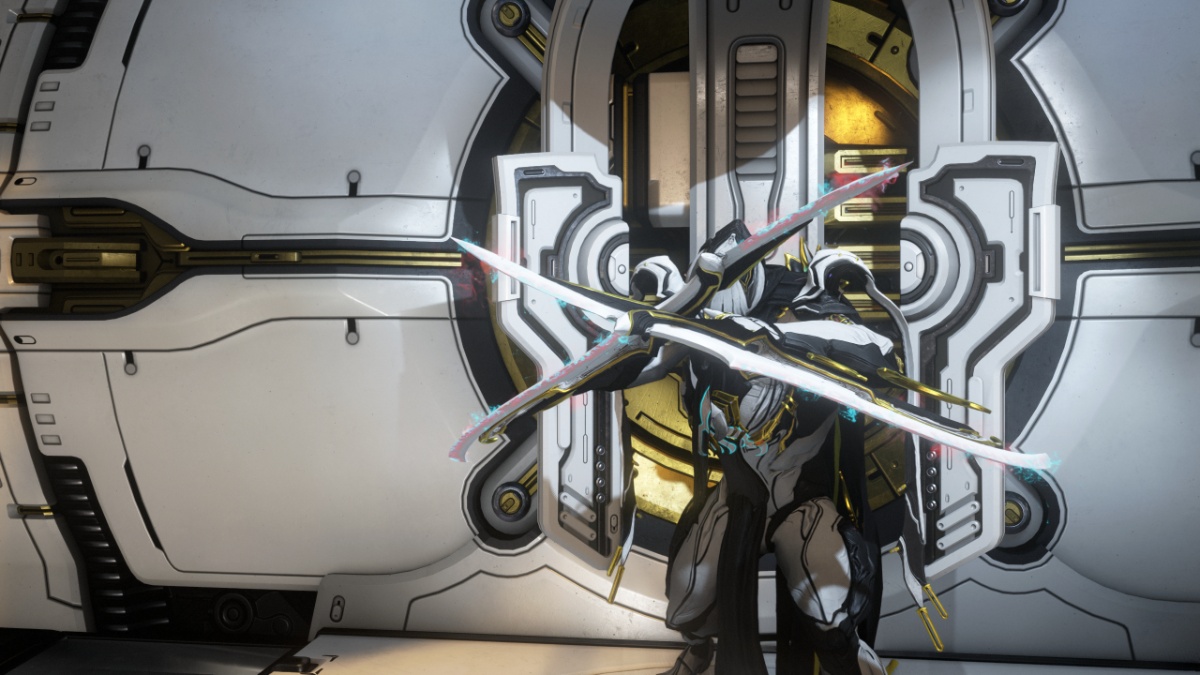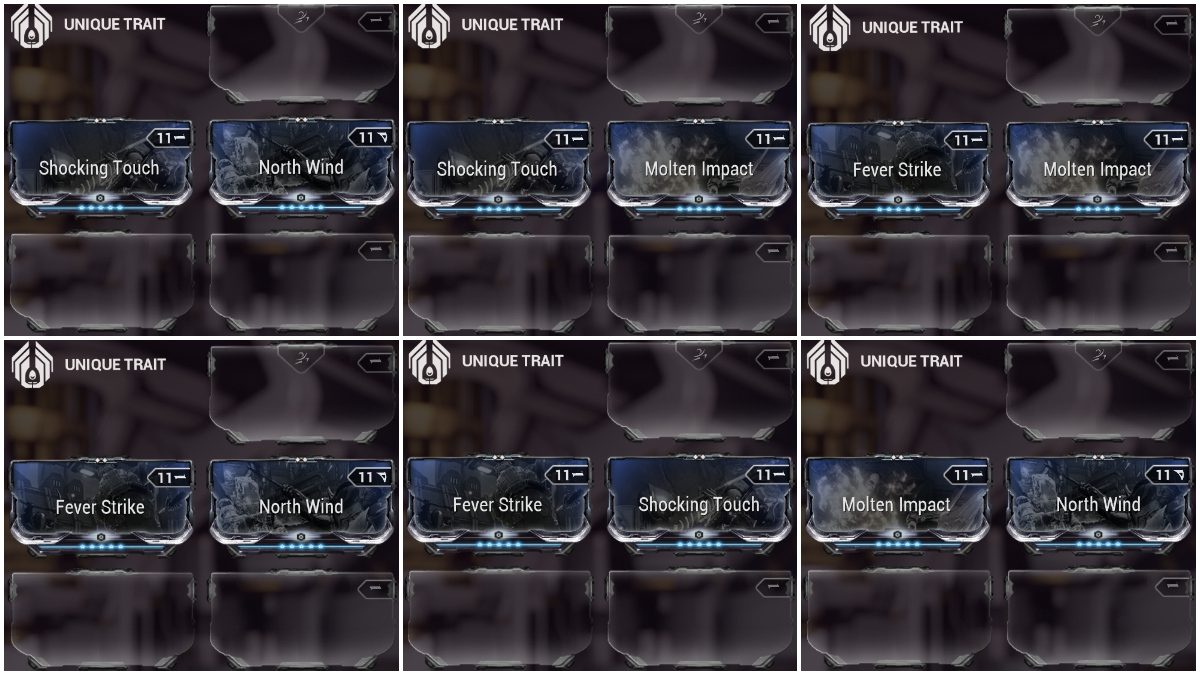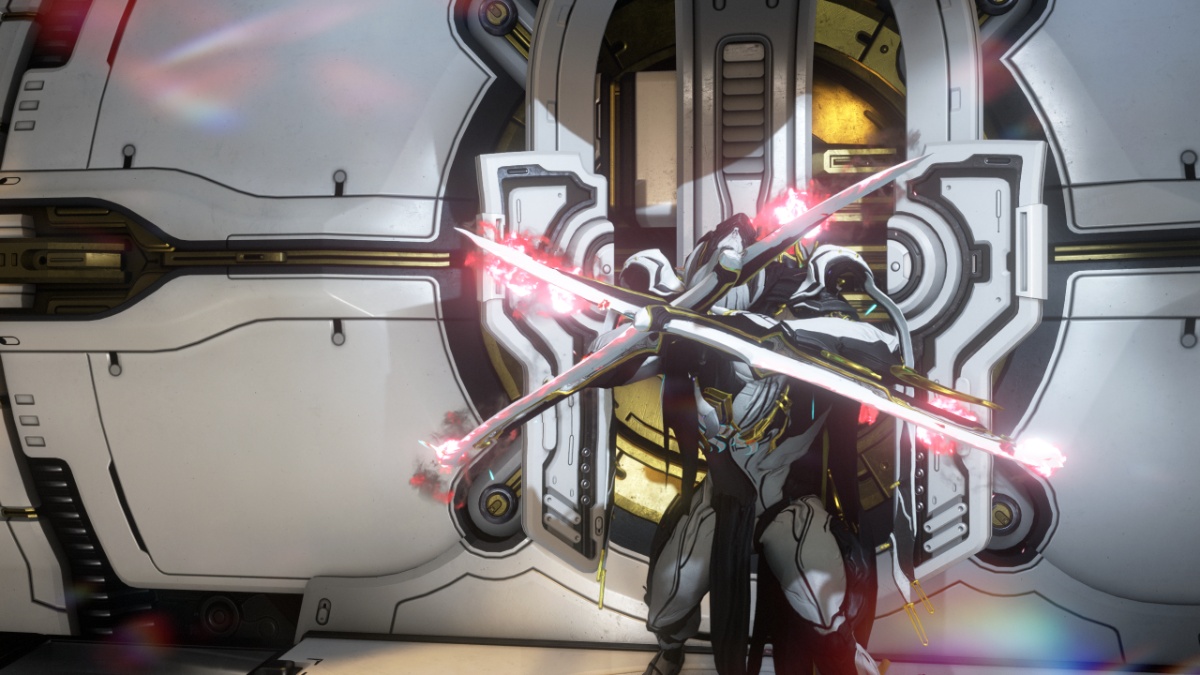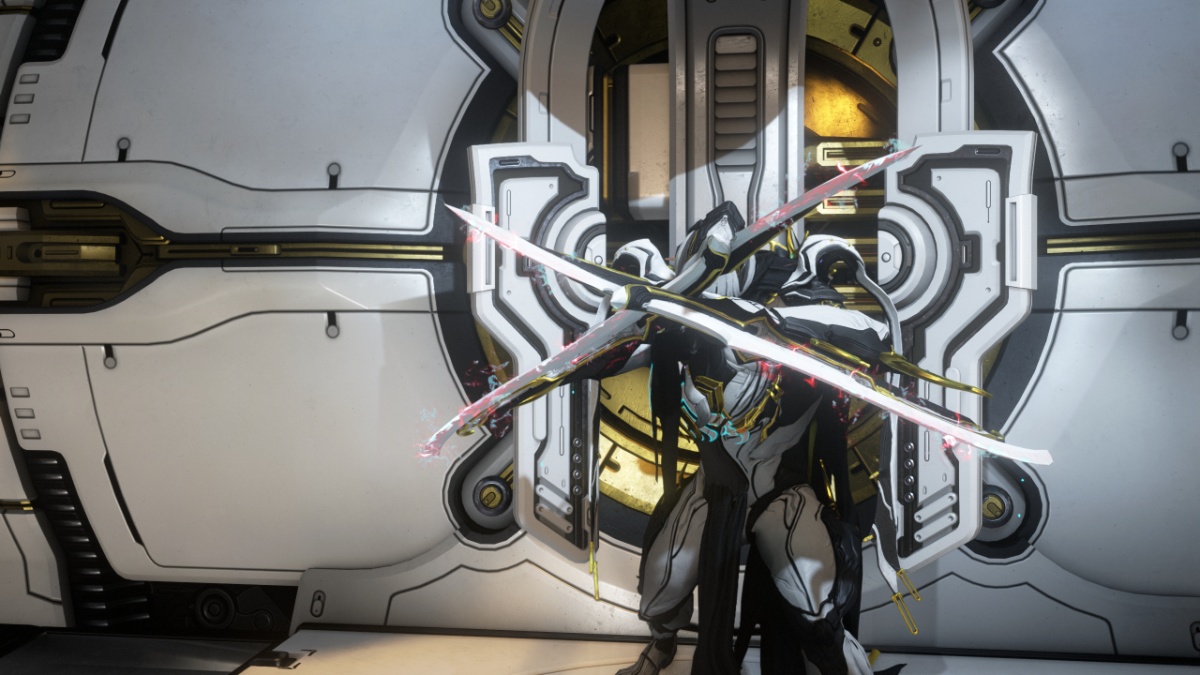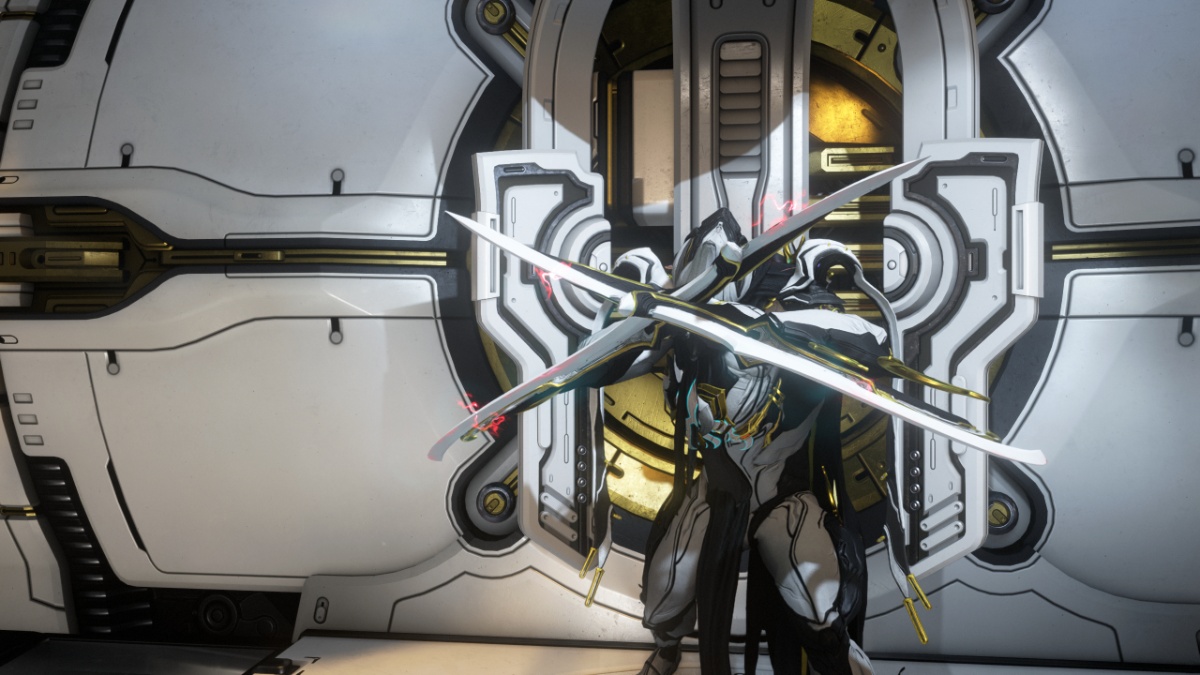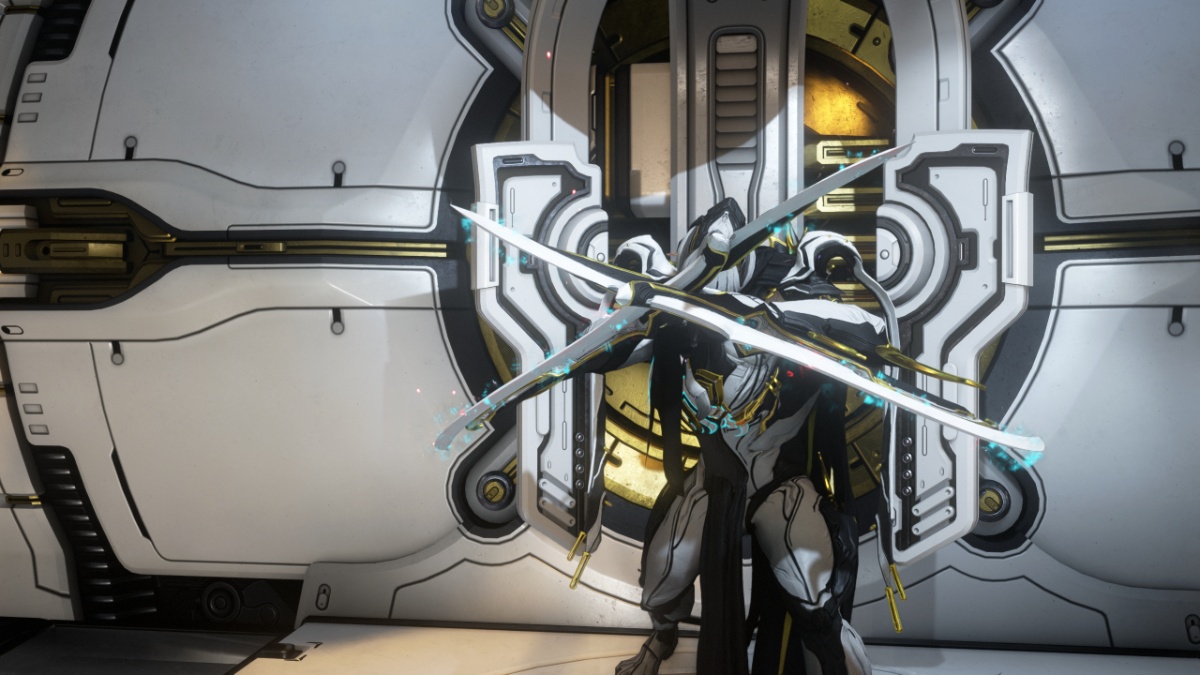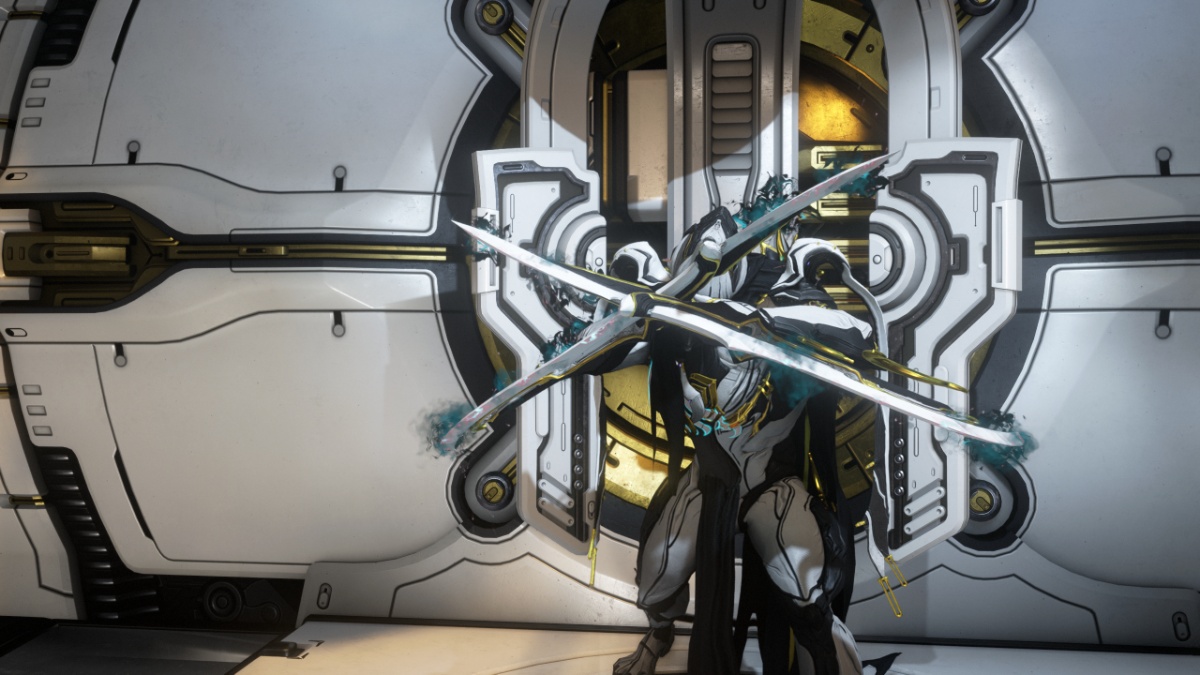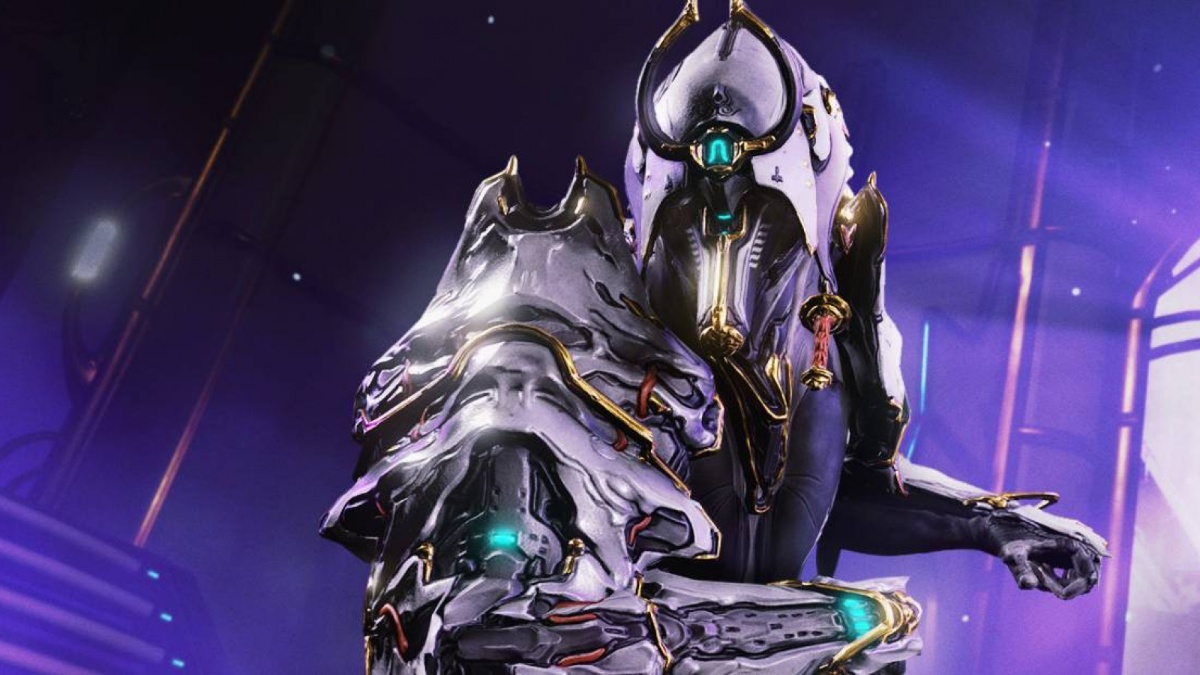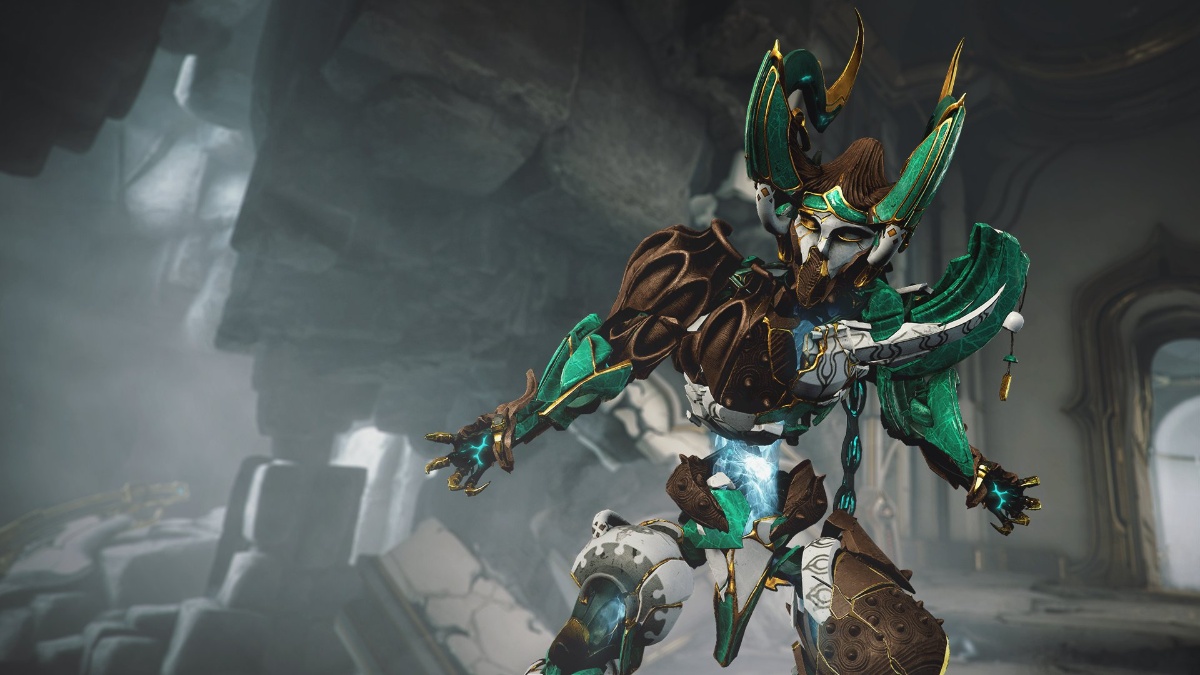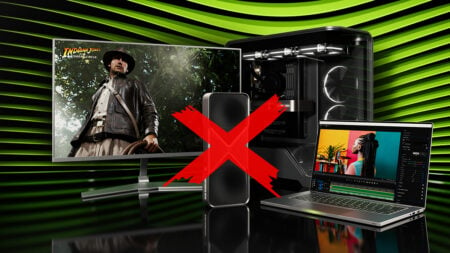Skip To...
You’re given no shortage of tools in Warframe with which to torture, maim, and bisect your enemies. But if you want to be effective with weapons, you have to take note of the Warframe damage types. They’re otherwise known as elements in Warframe, though they can be more complex than that once you start combining or taking advantage of them. You can do that better by understanding the damage types in Warframe, so we’re here to explain them.
Physical Warframe Damage Types
Also known and abbreviated in the community as “IPS” (Impact, Puncture, Slash) damage, you can find the Physical damage types in Warframe in some of the most common weapons. Weapons that look conventional (guns with bullets, bows, blades, etc.) typically have them.
Most weapons have varying amounts of each of these Physical damage types, though the highest number dictates the weapon’s guaranteed corresponding status effect.
Impact
Impact works great against Shields, making them effective against Corpus enemies. It has the following status effect:
- Stagger (stacks five times and lasts six seconds for each stack) – Causes enemies to recoil and effectively become incapacitated.
Impact sadly doesn’t work well against Grineer enemies.
Puncture
What works well against the Grineer? Puncture. Puncture damage pierces armor, making it ideal against heavily armored enemies. It also triggers the following status:
- Weakened (five stacks, six seconds each) – Affected targets deal 40-80 percent less damage depending on the stacks. They also receive a 5-25 percent increased weapon Critical Chance from your weapon, applied after mods.
In general, it’s good due to the status effect, but not really effective against Shields or the majority of Corpus enemies.
Slash
Slash supposedly works best against flesh or Infested enemies; however, its corresponding status effect makes it the best out of all Physical damage types in Warframe.
- Bleed (six seconds of damage over time) – DoT damage scales based on the total damage of the hit. Armor or Shields won’t reduce the amount of DoT damage.
Take note of how Bleed ignores Armor or Shields. That’s why most players prefer Slash and Bleed combos from their weapons. It scales infinitely and can take down level 200+ enemies with ease or even deal with level-cap enemies.
As for how each Physical damage type performs against certain armor types, here’s a table to help you.
| Damage Type | Cloned Flesh | Ferrite Armor | Alloy Armor | Machinery |
| Impact | –25% damage | +25% damage | ||
| Puncture | +50% damage | +15% damage | ||
| Slash | +25% damage | –15% damage | -50% damage |
Elemental Warframe Damage Types
Here’s where Warframe damage types get more interesting. The four base “elements” in Warframe have their own status effects and also differ in effectiveness depending on the targets.
Their status effects are more important compared to how they perform against certain enemies, so try to keep a mental note of these.
Cold
Cold is similar to Impact and performs well against Shields, meaning most Corpus enemies. However, it also works well against the Grineer. This is its status effect:
- Freeze (six seconds and stacks nine times) – 50-90 percent target speed reduction. Target also receives +10-50 percent Critical Multiplier damage from your weapons, applied after mods.
Pretty good on its own, though apparently not effective against the Infested. It’s a desirable innate damage type for weapons since it can turn into Viral (more on that later).
Electricity
You can bring Electricity Damage against Grineer, Corpus, and Infested enemies. The only enemies in which it won’t work well are rare high-ranking Grineer units such as Bombards or Napalms.
- Tesla Chain (six seconds, 3-meter radius) – Stuns targets and deals ticks of damage every second. It can stack multiple times.
Thus, Electricity Damage is good for crowd control and a desirable innate damage type for weapons as it can turn into Corrosive.
Heat
If you’re fighting Grineer and Infested enemies more often than Corpus enemies, Heat is the damage to pick. It has the following status effect:
- Ignite (six seconds of DoT) – Deals damage ticks every second and reduces enemy armor up to 50 percent.
Decent element if you’re going up against heavily armored enemies, though the DoT from Ignite is less powerful than Bleed from Slash.
Toxin
Finally, here’s the most desirable base element in Warframe. You can combine it with either Cold or Electricity for Viral or Corrosive, respectively. On its own, however, it’s not that good.
- Poison (six seconds of DoT) – Deals Toxin damage every second. It can bypass Shields.
The DoT isn’t as good as Bleed from Slash or even Ignite from Heat. And even if it bypasses Shields, the damage can be unreliable.
Here’s how the base elements perform depending on enemies:
| Damage Type | Cloned Flesh | Ferrite Armor | Alloy Armor | Machinery |
| Cold | +25% damage | |||
| Electricity | –50% damage | +50% damage | ||
| Heat | +25% damage | |||
| Toxin | -25% damage |
Combined Warframe Damage Types
This is where Warframe damage types become a lovely puzzle of death. You can combine two of the base elements above to create something with a unique effect and damage type.
There are six combinations in total, and each of them is suited for certain situations, though some are more powerful than others. We’ll point out which is which.
Blast (Cold + Heat)
Think of it as an explosive Warframe damage type. It used to knock down enemies in a small area (and has since been nerfed). Regrettably, the status effect is lackluster.
- Inaccuracy (six seconds for each stack, 10 stacks total) – Reduces the ranged accuracy of targets by 30-75 percent.
Players generally avoid this combo damage type after it was nerfed.
Corrosive (Electricity + Toxin)
Corrosive is one of the most sought-after damage types in high-level missions due to its status effect:
- Corrosion (eight seconds for each stack, 10 stacks total) – 26-80 percent armor reduction for affected targets.
This softens up the toughest Grineer and Corrupted enemies, which is why endgame players value it the most. It can make you less reliant on Bleed from the Slash damage type in taking down high-threat targets.
Gas (Heat + Toxin)
Gas is not really as potent as Corrosive for high-level missions, though it has its place when you’re dealing with swarms of Infested thanks to its status effect:
- Gas Cloud (six seconds, 3-meter radius, 10 stacks) – Releases a gas cloud that deals DoT with a radius of three to six meters, depending on the stacks.
Sadly, it’s overshadowed by Bleed as a DoT, despite the area coverage. The damage ticks are too low to stay relevant in Steel Path.
Magnetic (Cold + Electricity)
If you really hate Shields that much, then Magnetic damage is your best bet. It works well with Impact to make quick work of Corpus enemies and stop them from annoyingly regaining their shields.
- Disrupt (six seconds for each stack, 10 stacks total) – Increases damage to Shields by 100-325 percent depending on stacks and also removes the target’s Shield regeneration.
Despite being well-suited for Corpus, you can also take this nearly everywhere, as only high-ranking Grineer enemies are resistant to it.
Radiation (Electricity + Heat)
Radiation is by far the best damage type for crowd control, regardless of who you’re fighting. It’s also decent for overall damage and is a certified elite Grineer enemy killer.
- Confusion (12 seconds for each stack, 10 stacks total) – Makes targets fight the first living thing they see, including their allies. Affected targets also deal 100-500 percent bonus damage to enemies of Tenno.
This works well with just about any weapon, even the non-AoE ones. It’s also a generous duration of Confusion that can ultimately lead to your survival unless there’s only one target.
Viral (Cold + Toxin)
If you’re relying on Bleed from Slash and aren’t fond of Corrosive damage, then Viral is the way to go. It has the following status effect that complements Bleed so well.
- Virus (six seconds for each stack, 10 stacks total) – Affected targets take 100-325 increased damage to their health. It works against armor but not against Shields.
You can see how it’s almost mandatory for Bleed builds. The amplification of Bleed’s DoT is monstrous here, making it one of the most formidable status effects in Waframe. Regardless, it also works well without Bleed.
Here’s how the Combined Warframe damage types perform:
| Damage Type | Cloned Flesh | Ferrite Armor | Alloy Armor | Machinery |
| Blast | –25% damage | +75% damage | ||
| Corrosive | +75% damage | |||
| Gas | -50% damage | |||
| Magnetic | -50% damage | |||
| Radiation | +75% damage | |||
| Viral | +75% damage | –25% damage |
Unique Warframe Damage Types
Unique Warframe damage types function outside of the usual norms, and you usually can’t acquire them with weapons or mod combinations. They’re mostly reserved for Warframe abilities.
Still, the two of them are no doubt powerful, perhaps even more so than most of the other damage types above.
“True”
True damage type is just that. True. Pure. It’s an unofficial, community-created term. It also deals 100 percent of its damage against anything, with no resistances, no modifiers, and no reductions. This damage type also only applies to health and even bypasses Shields.
Pretty straightforward, hence there’s no status effect. These are the following Warframes whose abilities can supposedly deal “True,” unmitigated damage:
- Ash
- Frost
- Hydroid
- Inaros
- Kullervo
- Mag
- Revenant
- Sevagoth
- Trinity
Apart from these guys, you typically have no other source of True damage.
Void
Void damage is another special Warframe damage type limited to one Warframe (Xaku) and the Operator or the Tenno themselves. It has a status effect, unlike True damage.
- Bullet Attractor (three seconds, 2.5-meter radius) – Affected targets suffer a 2.5-meter radius field that attracts projectiles no matter where they’re aimed.
It’s perfect for cover fire since you’ll still hit the targets, though useless for melee builds. Keep in mind that there might be more Warframe damage types in the near future, depending on updates. For now, here are your toys; go play with them. Just be careful not to kill your teammates while under Radiation damage.



